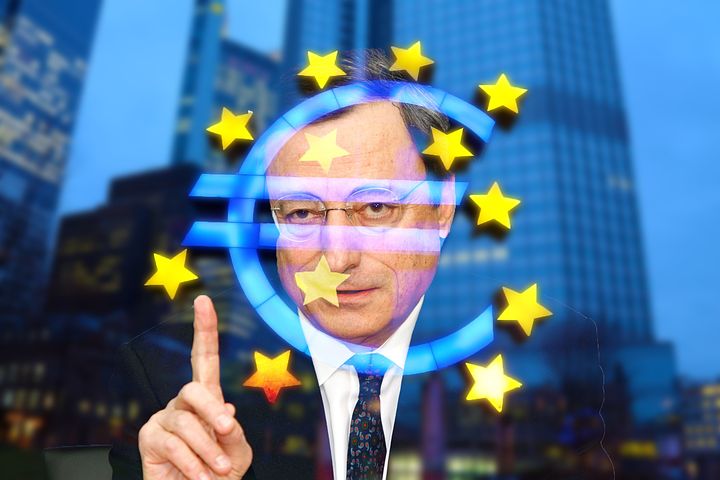BofAML _ BCE y tasa de depósito
Redacción - Viernes, 24 de Marzo Euro Area Economic Viewpoint: The deposit rate itch: scheduling and packaging are key • Tweaking the forward guidance to incorporate the possibility of a hike before QE ends cannot be done safely in isolation. * We think rates will stay put in 2017. If outlook risks fully balance the ECB could drop the "lower" already in June. • By September when discussing QE ECB would need to signal the possibility of a reversal, which would materialize in 2018.
Euro Area Economic Viewpoint: The deposit rate itch: scheduling and packaging are key • Tweaking the forward guidance to incorporate the possibility of a hike before QE ends cannot be done safely in isolation. * We think rates will stay put in 2017. If outlook risks fully balance the ECB could drop the "lower" already in June. • By September when discussing QE ECB would need to signal the possibility of a reversal, which would materialize in 2018.
Don't rush it
The ECB's policy is a package, with three interconnected pillars: the level of the policy rates, forward guidance, and Quantitative Easing. Any change to the sequencing currently embedded in the forward guidance -"policy rates would stay at the current level or lower well after the end of the net purchases" - has ramifications for QE as well.
Indeed, we think it is possible to argue that the cost of the negative deposit rate for banks, and hence on credit supply, grows the longer QE lasts. Thus, from a purely economic point of view, there could be a sound justification for raising the deposit rate only if QE continues after the current "soft deadline" of December 2017. In a nutshell, the "reversal point", i.e. the level at which a negative deposit rate can be counter-productive, might have been well below -0.4% when the ECB was not committed to QE continuing beyond March 2017. Symmetrically, if QE continues beyond December 2017, the "reversal point" might be above -0.4%.
Still, getting the timing right, as well as the packaging, is key in our view. Beyond the economic argument over the "reversal point", and whatever the final decision on sequencing is, there is a cost to this public discussion on the ways and means of the exit strategy, as markets react aggressively, with the risk that the Euro area faces a de facto tightening in financial conditions before the recovery in the Euro area is fully established. The main takeaway from these discussions is indeed that beyond the technicalities, the conversation on the exit strategy is already in full swing at the ECB. Whatever reassuring forward guidance would be put in place after the first deposit rate hike, its credibility would be lower than the current one.
It is very early, in our view, for the "Draghi put" to be on its way out. Core inflation is not going to accelerate much above 1% any time soon. And on the real side, while the recovery is gaining momentum, global animal spirits were reawakened by the promise of a massive fiscal reflation in the US which so far has not been substantiated, leaving the risks over the economic outlook tilted to the downside.
Moreover, while we acknowledge that negative rates could be detrimental to credit supply - for our part we vehemently argued against this instrument when it was introduced - credit demand also needs to be taken into account. Now that the deposit rate is de facto THE policy rate of the ECB, hiking this rate will transmit to the money market curves and finally to the actual borrowing rates of corporates and households. Credit demand has recovered lately, but it remains shaky. It is not obvious in our view that the net effect of strong credit supply will offset the drop in demand.
So, we think that tweaking the forward guidance to incorporate the possibility of a reversal of the sequence cannot be done safely in isolation, i.e. before the central bank announces a continuation of QE beyond December 2017. We thus think that the policy rates will stay where they are in 2017. If inflation evolves as expected and risks are fully balanced the ECB could drop the "lower" from forward guidance already in June. By September, when a discussion on the continuation of QE would take place, the ECB would need to signal the possibility of a reversal in the sequencing, which would be conditional and would only materialize in 2018, once the dynamics of demand and core inflation are more firmly established.
[Volver]
- Un intercambio entre Warren Buffett y Charlie Munger, que es oro
- MERCADOS: “La clave más importante es no enamorarse de lo que posee”
- No ESG y ‘pragmatismo energético’. El enfoque ha cambiado completamente
- “Por cada dólar invertido en combustibles fósiles, se están invirtiendo actualmente $1,7 en energías limpias”
- Las empresas enfrentan un mayor riesgo de sufrir pérdidas extremas debido a incidentes cibernéticos
- El P/E adelantado de las empresas de pequeña capitalización de EE. UU. se encuentra ahora por encima del promedio histórico
- Un intercambio entre Warren Buffett y Charlie Munger, que es oro
- No ESG y ‘pragmatismo energético’. El enfoque ha cambiado completamente
- Se espera que 6 $SPX sectores registren un crecimiento interanual de las ganancias para el primer trimestre de 2024.
- MERCADOS: “La clave más importante es no enamorarse de lo que posee”
- Las empresas enfrentan un mayor riesgo de sufrir pérdidas extremas debido a incidentes cibernéticos
- En 23 de los últimos 44 años, el S&P500; corrigió un 10% o más en algún momento del año. 13 de esos años terminaron más arriba, un 17,5% más en promedio
- El P/E adelantado de las empresas de pequeña capitalización de EE. UU. se encuentra ahora por encima del promedio histórico








